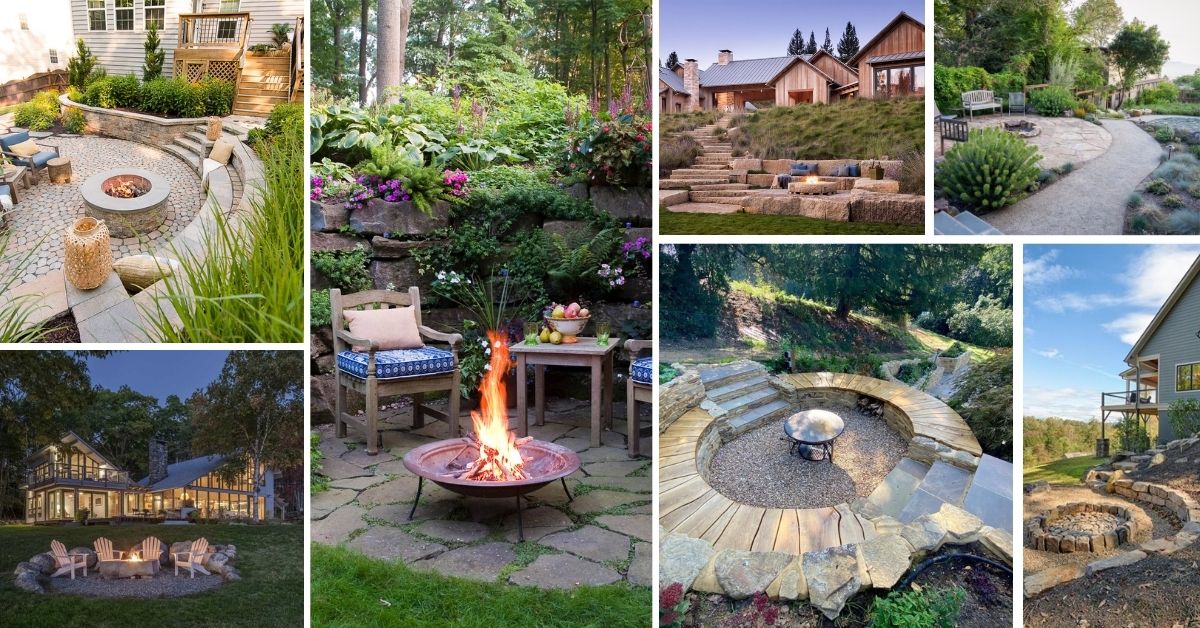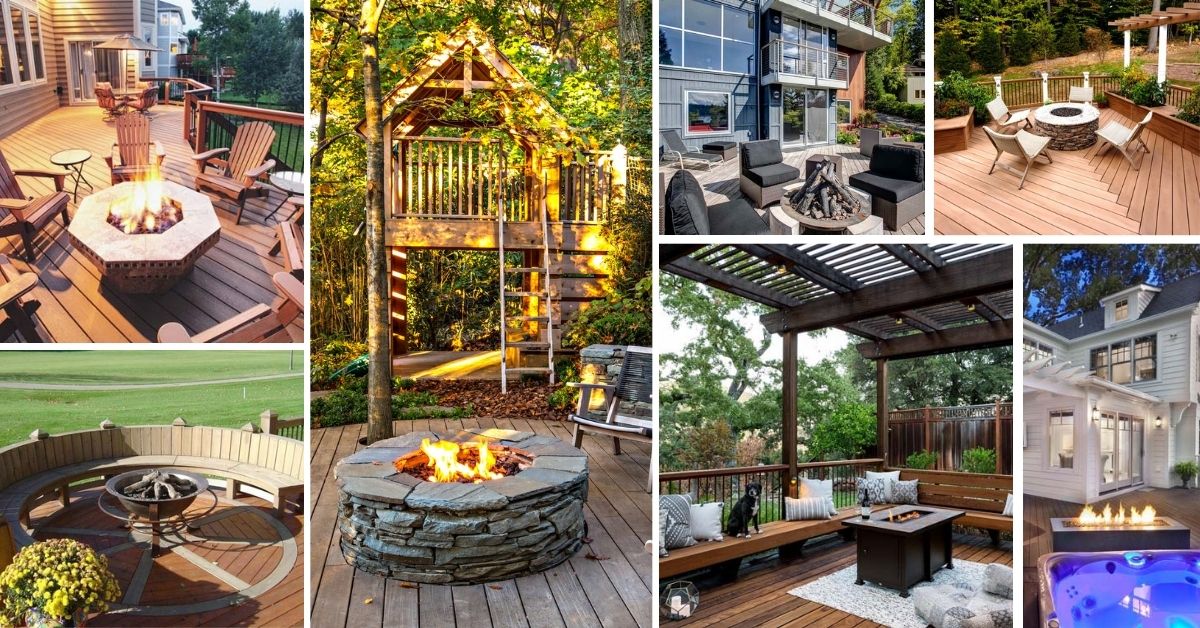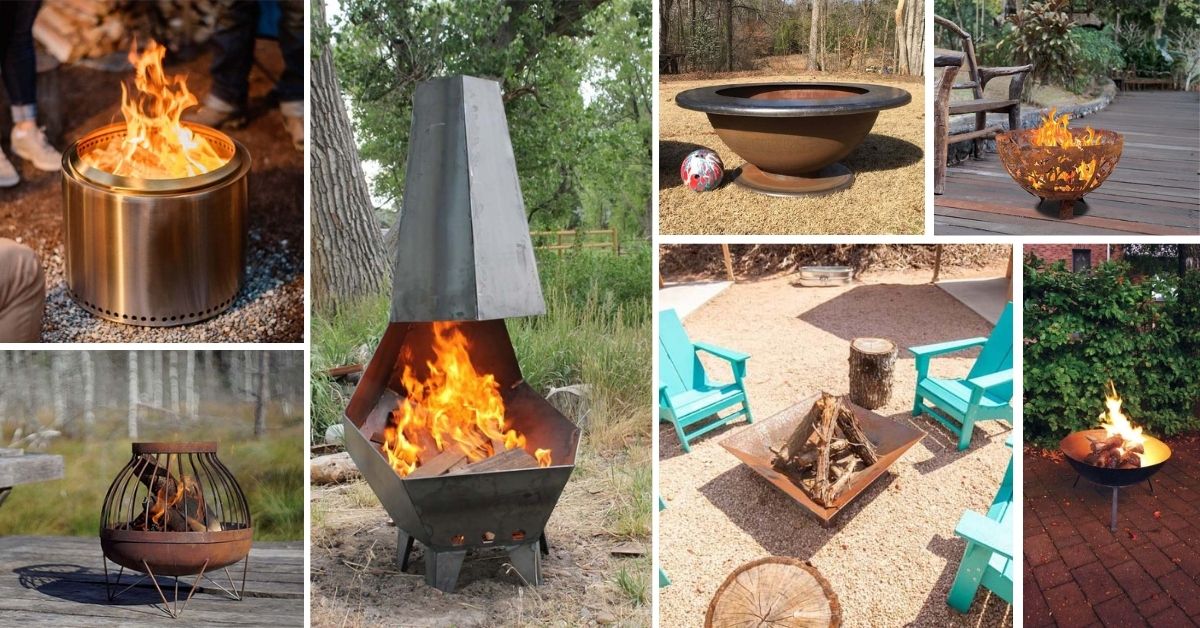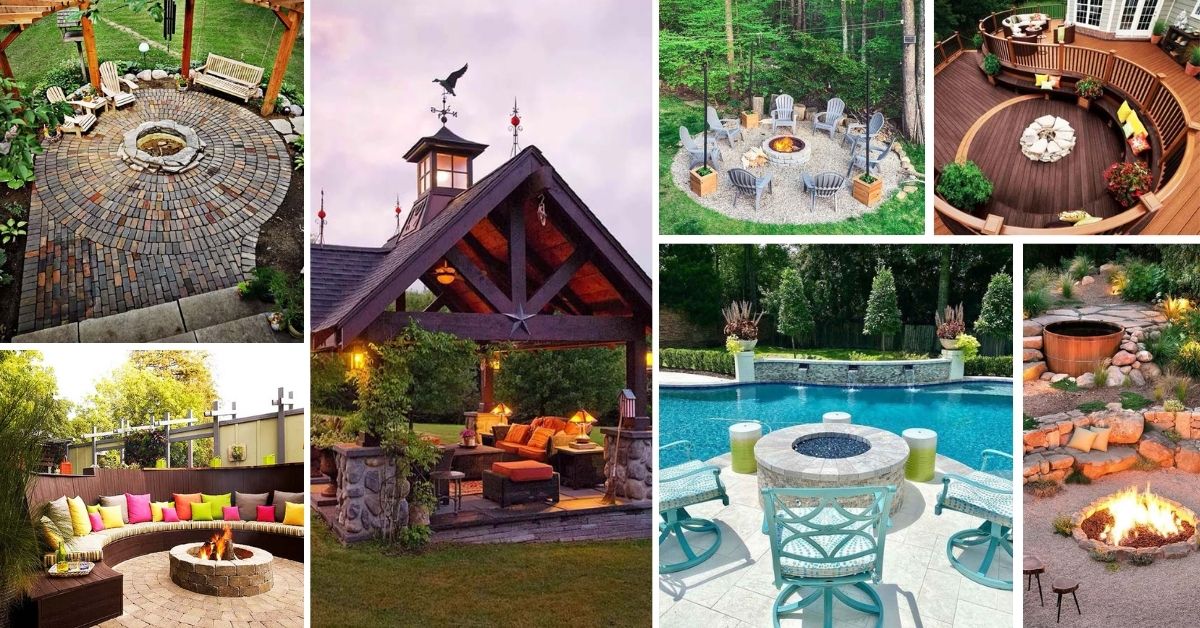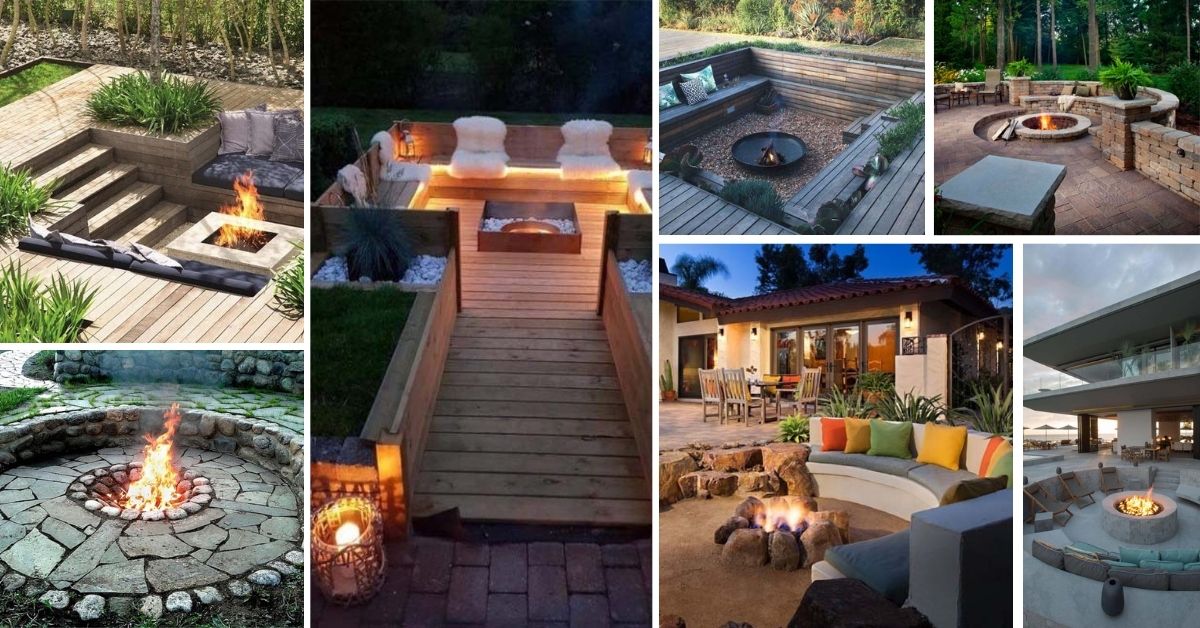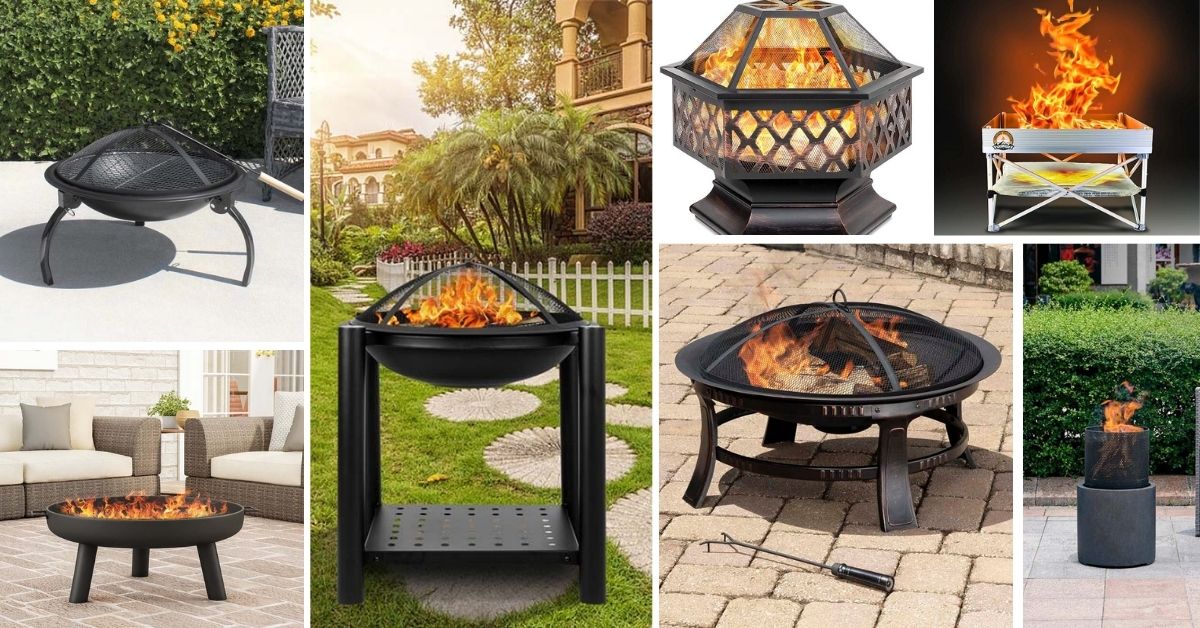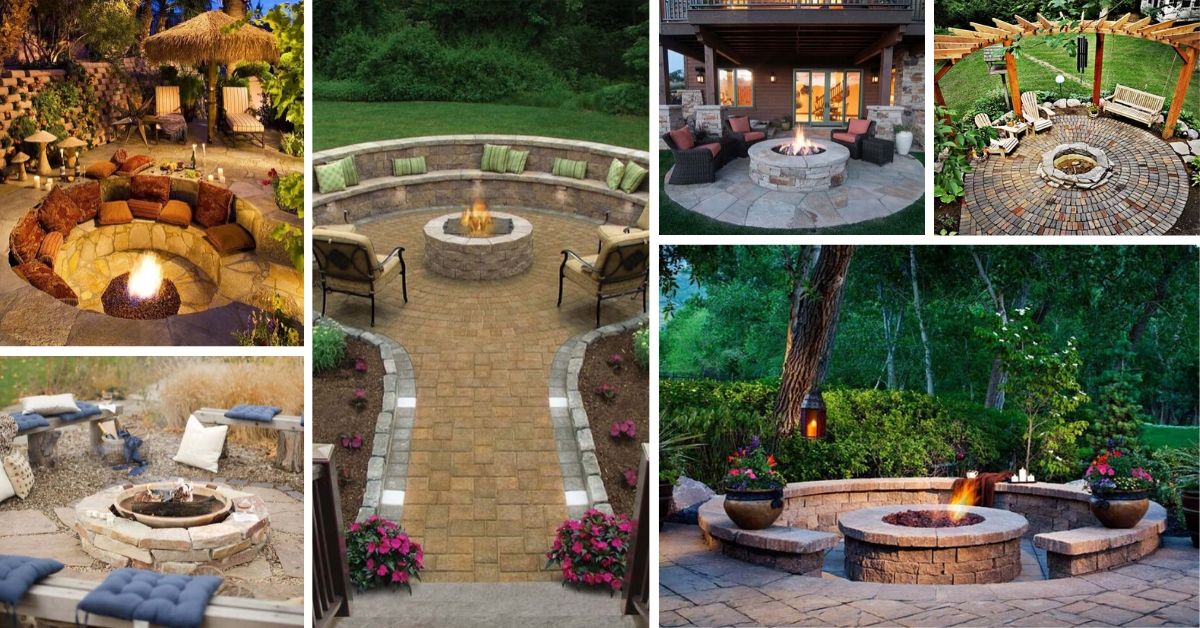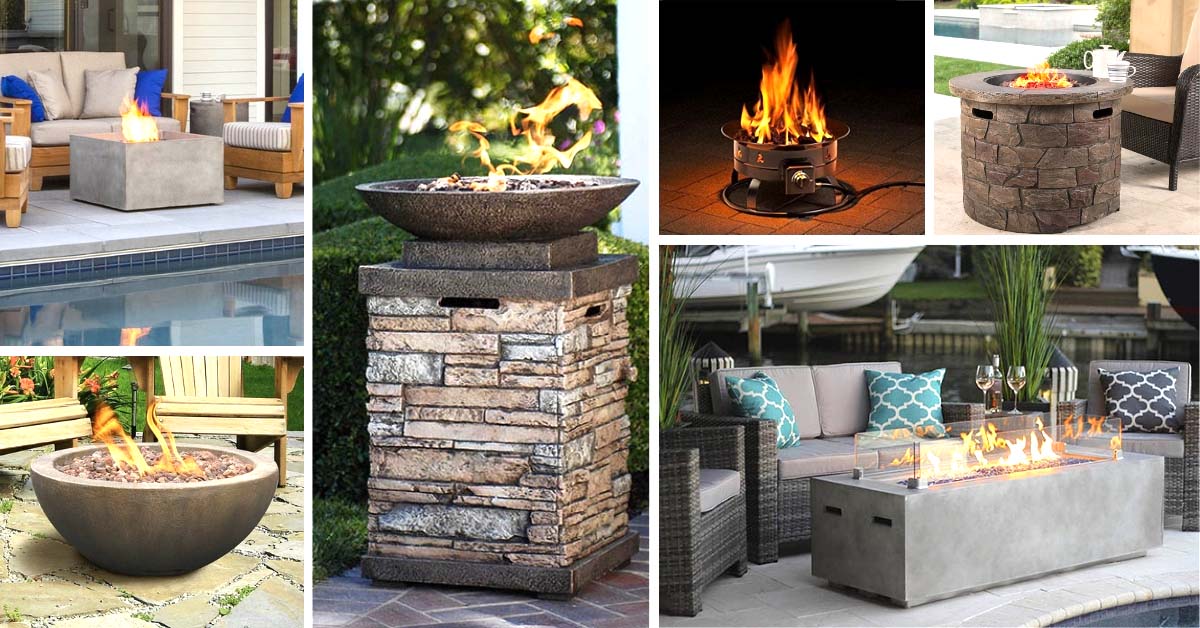Creating the perfect outdoor living space starts with a centerpiece – a firepit.
A backyard firepit can add ambiance to any outdoor setting and provide a great gathering place for family and friends.
Whether you’re grilling kebabs on the open flame or simply toasting marshmallows, planning out how to build a firepit is essential in ensuring durability and safety.
This blog post will look at nine important elements you should incorporate when designing your backyard firepit – from selecting a safe spot for installation to choosing the appropriate building material.
1. Raised Fire Pit versus Sunken Fire Pit
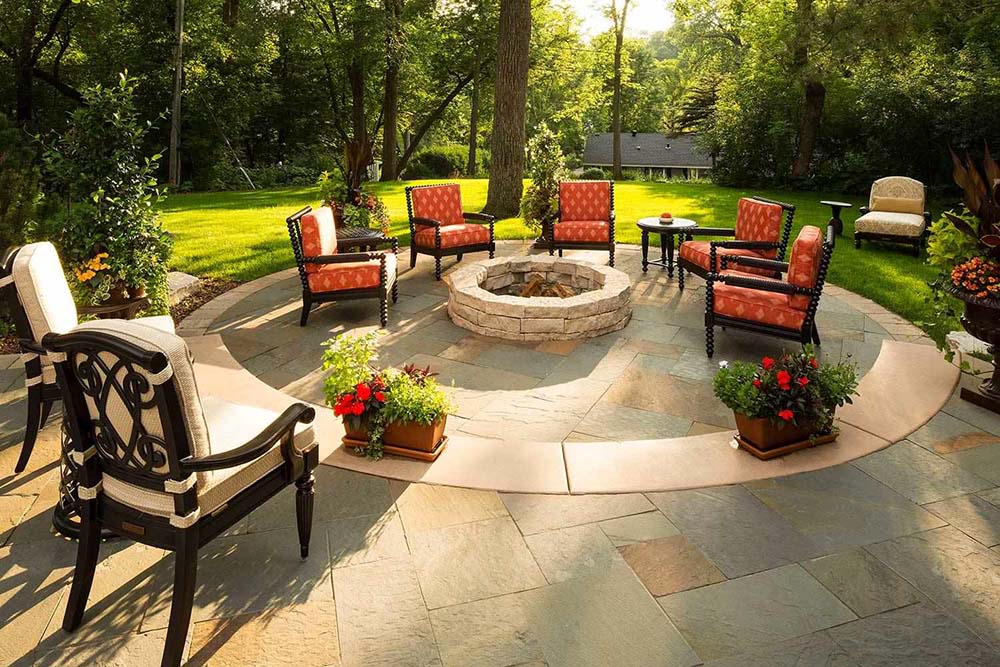
via Southview Design
What are the pros and cons of a raised firepit versus a sunken one?
Raised firepits are popular due to their aesthetic appeal; they are installed at ground level and often double as seating areas or receptacles for outdoor decor.
A raised firepit is also easier to construct, as the walls can stand on the ground rather than be dug into the earth, making it much simpler and less time-consuming for an amateur builder. The downside to having a raised firepit is that it requires more maintenance because you need to check on the foundation periodically for any damage from weather or shifting soil.
On the other hand, sunken firepits offer more protection against smoke; as they are placed below grade, air travels downward and away from the user.
Since it’s partially buried in the ground, it absorbs some of the heat from the fire, which helps keep temperatures around the pit comfortable; this means people can sit closer without feeling uncomfortably hot. Additionally, because they are set lower than any furniture or seating areas built around them, they tend to feel more natural and ‘grounded’ compared to a raised version.
However, this type of installation can be more complex and costly than a raised version. Cleaning up after use can also be difficult due to its hollow nature; however, specific models come with built-in drain systems, which make cleanup easier.
Ultimately, choosing between the two styles will depend on your intended uses, environment, and desired outcome.
2. Materials
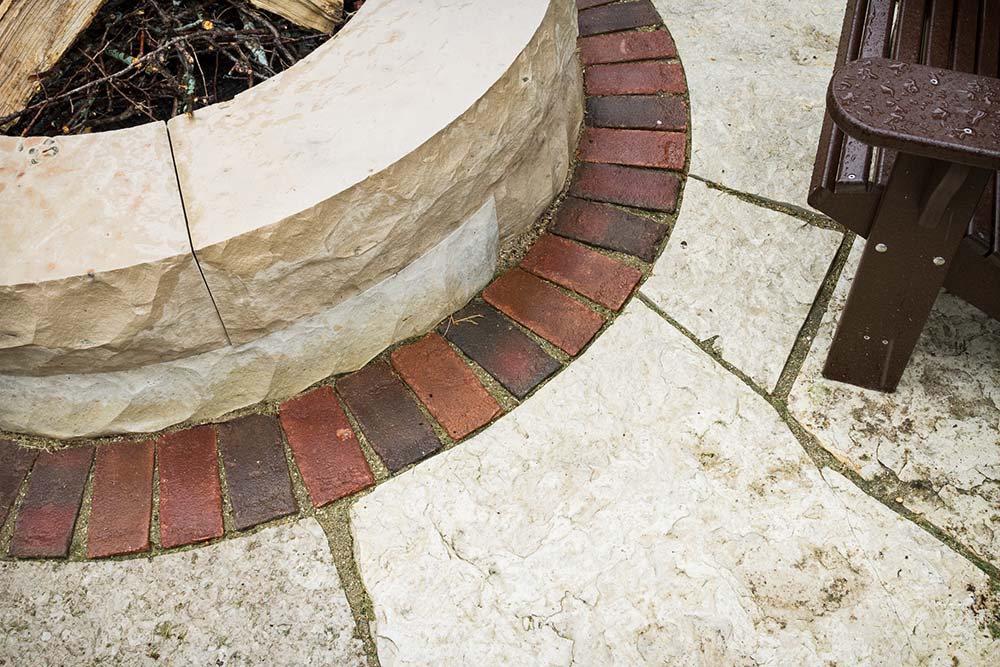
What should you use to line your firepit?
Multiple options are available to line your firepit, each with its advantages and disadvantages. Bricks are a great option as they provide stability and long-term durability. Stones and pebbles are another material you can use to line an in-ground firepit, although stones may provide less heat resistance than brick or pavers.
It is also possible to use other ceramic tiles, but these must be rated for outdoor use and high temperatures to remain intact during use. In addition to the overall design and desired aesthetic appeal, it is essential to consider the materials’ temperature requirements and how often you will use your firepit to ensure long-term safety and functionality.
Are there any specific bricks you should use?
Selecting bricks suited to withstand high temperatures and fluctuating weather conditions is essential. Due to their heat-resistant properties, firebricks or refractory bricks are commonly recommended when building firepits. Firebricks have a much higher durability rating than regular clay bricks, making them ideal for withstanding heat and wear over time.
Additionally, fire-retardant mortars should be used as part of the construction process to maintain the structural integrity of the firepit.
Firebricks also come in various shapes and sizes, making it possible to create unique designs if desired. Though more expensive than other options, such as metal plates or sand, firebricks are a long-term investment that offers reliable protection from excessive heat.
Can you use normal cement?
Building a firepit with regular cement is not advisable as it may be unable to sustain the flames’ high temperatures. Regular cement is also known to crack when exposed to extreme temperatures, weakening structural integrity over time.
The best option for constructing your firepit is refractory cement, specifically designed to withstand constant heat over time. It’s also less likely to break apart during the curing process than regular cement, meaning that you’ll have a safe and long-lasting structure.
3. Safety
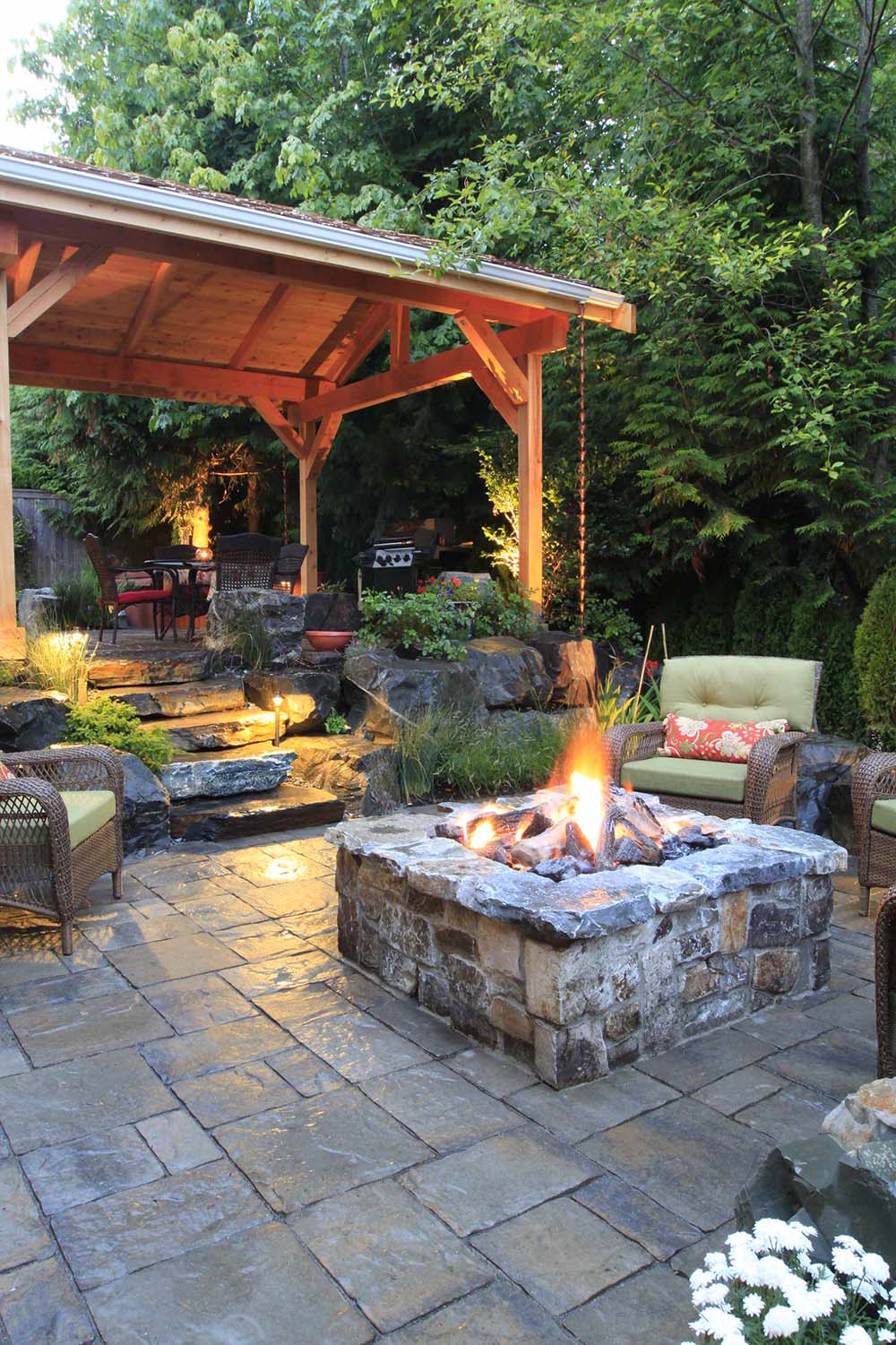
via Alderwood Landscape Architecture and Construction
How do you ensure that your firepit is safe?
Ensuring the safety of your firepit is a crucial responsibility to maintain your safety and that of others. It’s vital to assess the area and check for objects nearby that can easily catch fire, such as dry leaves.
Furthermore, ensuring proper airflow – through stabilizers between each brick – prevents too much smoke from building up, decreasing the chance of dangerous air quality due to carbon monoxide.
Creating a space underneath the firepit is also advised to protect users from heat escape. It is paramount to always have a water source nearby in case of emergency.
The location of the pit should also be determined wisely, considering weather conditions and ensuring the flames are facing away from wind gusts and other such elements.
Is there a specific number of bricks (both height and depth) to ensure safety?
While there are no hard and fast rules on the number of bricks (in terms of depth and height) that you should use, the consensus among experts is to create a wall at least 6 to 8 deep and 12 to 18 inches high, to contain any sparks or embers.
An additional suggestion may be to create a beautiful rock garden surrounding the fire pit. This adds decoration and enhances safety by containing flying debris away from property and people.
4. Ventilation
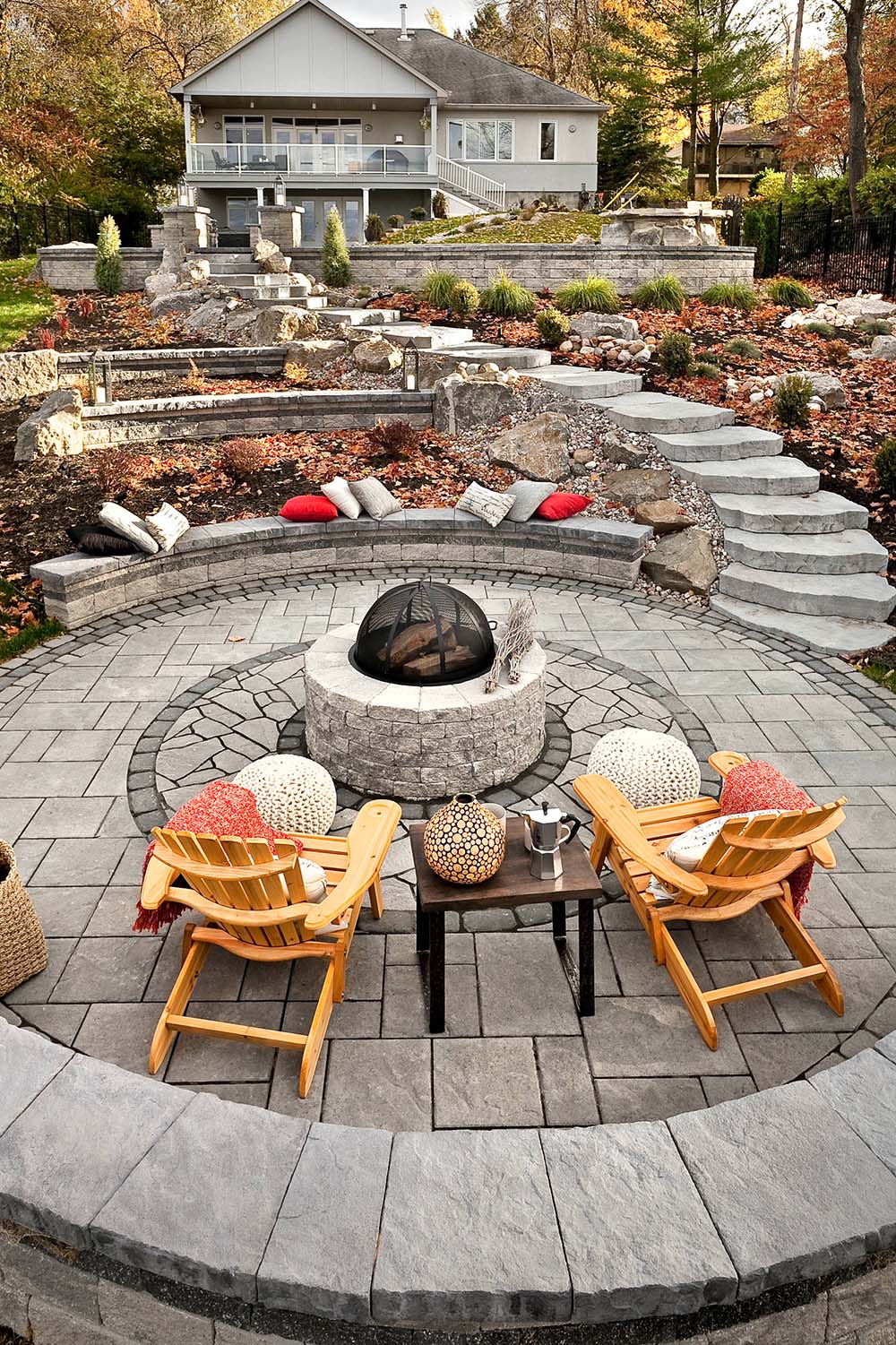
How do you ensure that it has enough air?
To ensure that a firepit has enough air, you must set it up in a well-ventilated space. It is essential to consider the wind direction when deciding where to place the firepit because if it is too close to any walls or other obstructions, the wind will not be able to blow fresh air through the fire.
Also, having open spaces around multiple sides of the pit allows air to circulate faster and drive out smoke quicker.
Placing a chimney or flue system above the pit can also ensure enough oxygen as hot air rises and brings new cool air down. Finally, never cover the fire with ash or coal before lighting, which stops airflow and results in inefficient burning.
5. Rules and Regulations
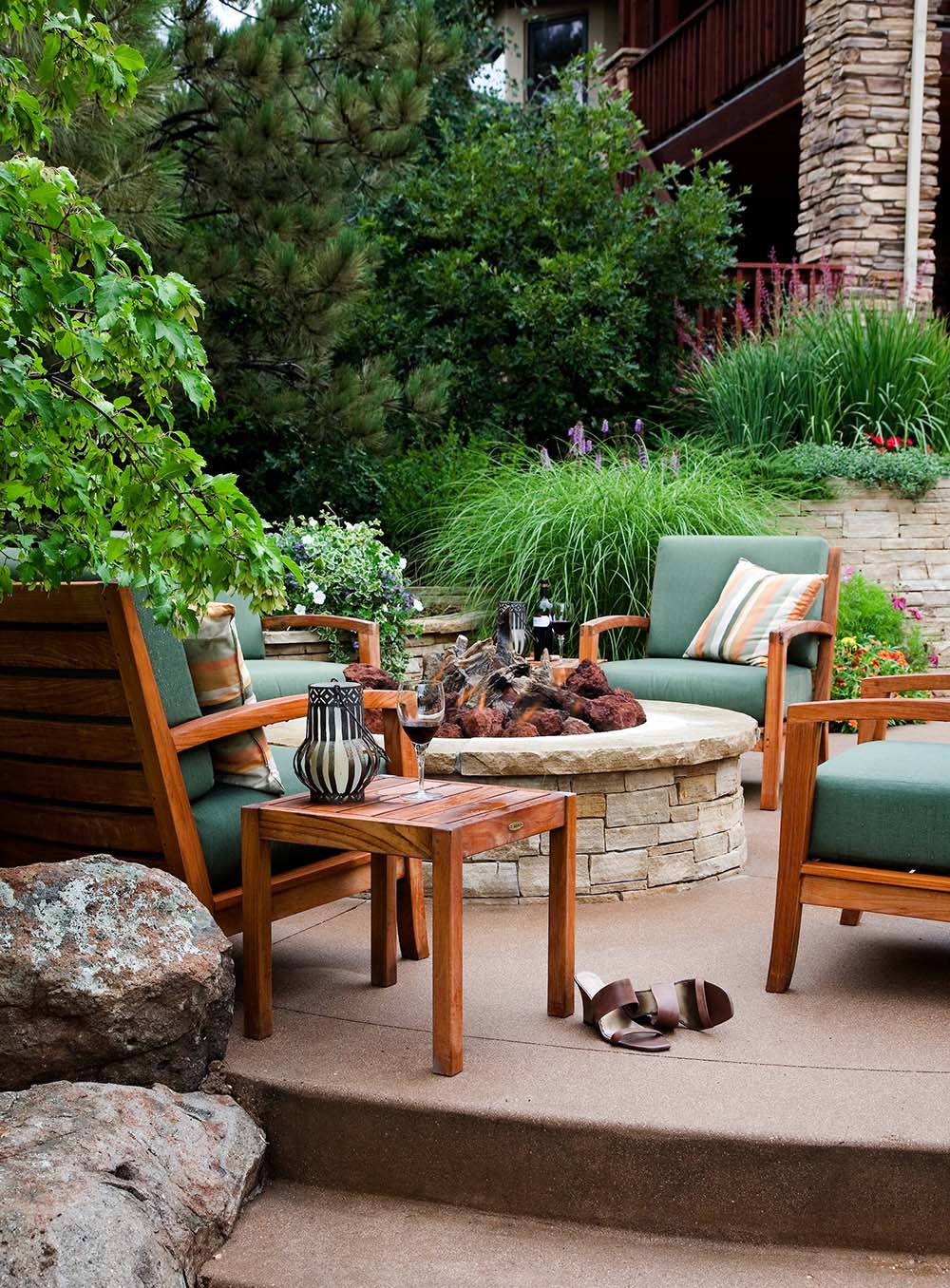
Are there any rules and regulations that must be followed?
Depending on the jurisdiction, you may need a permit, or there may be limits on the size and shape of the structure.
Local regulations will also indicate where your firepit should be located, covering factors like how far away from buildings you should place it. When it comes to combustible materials within a certain radius of the pit, hard surfaces like concrete will usually be required.
Additionally, ventilation must be factored into construction plans for efficient smoke dispersal.
Finally, remember that it’s not just about following restrictions — you also want to consider common-sense safety principles such as making sure sparks cannot spread beyond your space and keeping flammable liquids far away from the firepit environment. Building with safety and regulation in mind will ensure your firepit is appealing and safe for years to come.
6. Type of Fuel
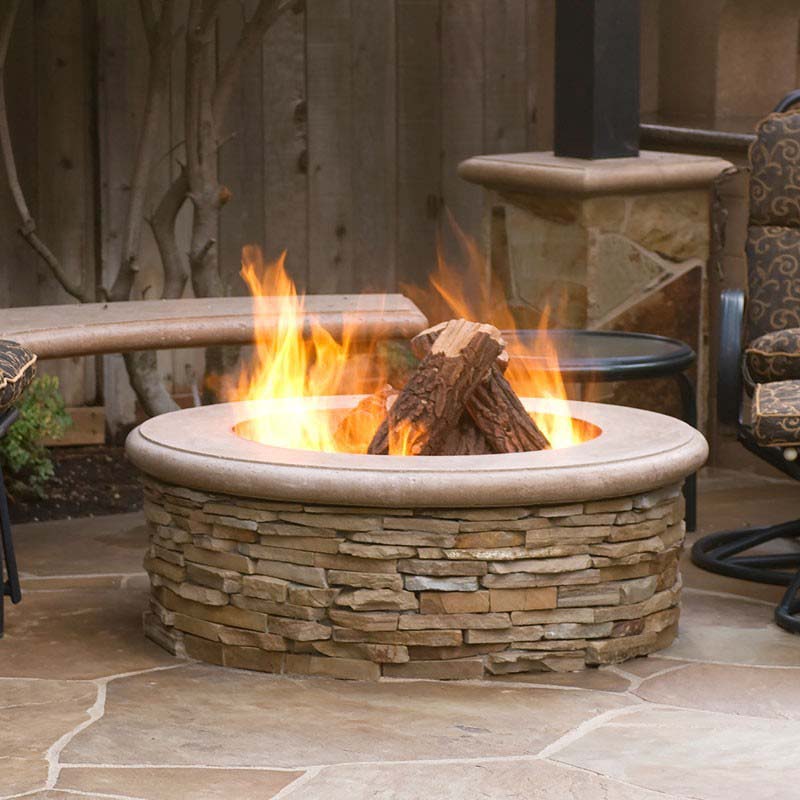
What fuel can you burn?
The beauty of fire pits is that they accept many types of fuel. Common fire pit fuels include wood logs, charcoal briquettes, gas logs, propane, and natural gas.
Wood-burning can bring the best atmosphere providing warmth and crackling sounds. Charcoal briquettes are easy to light with little smoke and provide long-lasting fires due to their slow burn rate.
When using gas logs or liquid propane, make sure to use the proper fuel tank size so that you don’t have any unexpected fires. Natural gas needs to be connected by your local utility provider as it is powerful but much more efficient than other fuels mentioned above.
Whichever fuel you choose for your firepit, ensure it meets safety standards and follow the manufacturer’s instructions for the best results.
7. Location
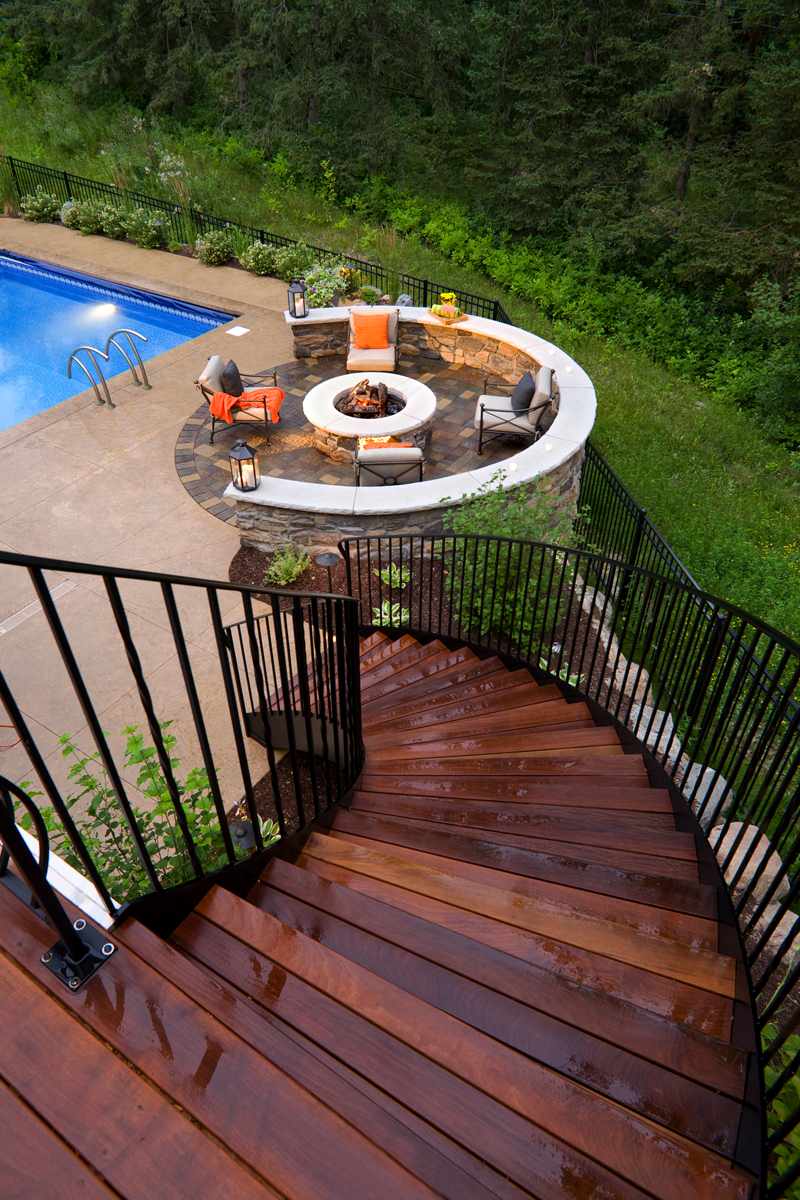
Is there an ideal location to put your firepit?
The ideal location for a firepit depends on several factors. Consider the amount of space available and what type of setup is desired.
If you’re working with a small area, opt for an above-ground firepit that can be positioned and removed as needed or a simple fire ring. Consider constructing an in-ground pit with enclosure walls for more extensive areas for safety.
It’s vital to ensure there are no combustible materials nearby before lighting your firepit, such as wood fences or walls, wooden decks or furniture, or even overhanging branches.
Be sure to put plenty of distance between your pit and any nearby buildings so they won’t be exposed to heat damage. Firepits should always be placed on flat surfaces such as gravel or flagstone and never directly on grass which can cause fires to spread quickly if not monitored properly.
Finding an area with easy access to the rest of your outdoor space may also be helpful for entertaining guests. You should also find a spot with good airflow so smoke won’t settle near your fire pit.
8. Drainage
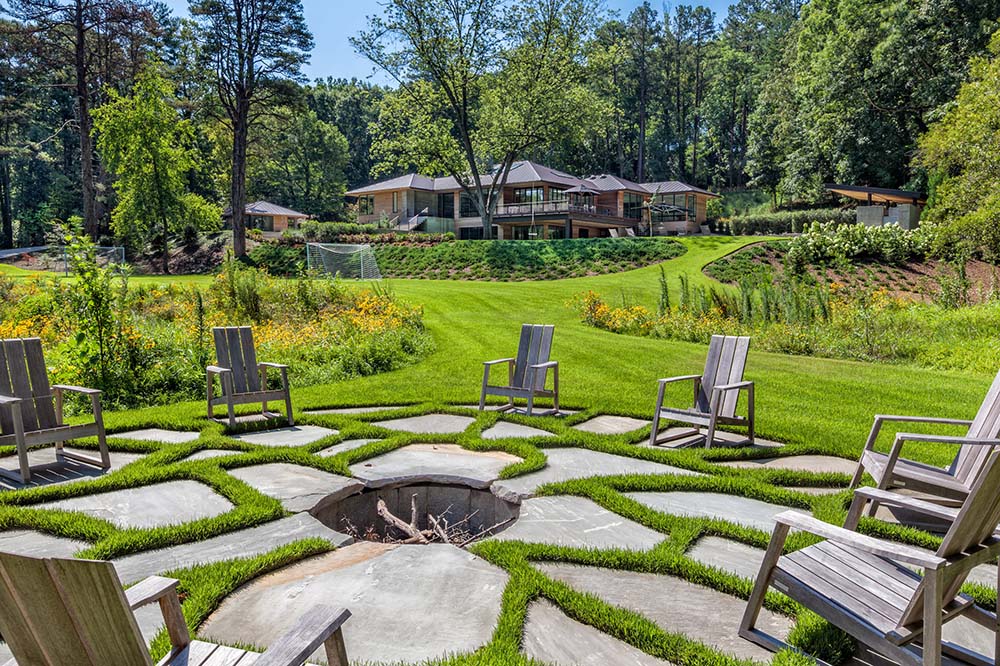
How can you ensure suitable drainage for your firepit?
When constructing a firepit, proper drainage is essential. It’s important to ensure that rain doesn’t cause the fire pit to flood and excessive water does not accumulate underneath the structure, as this can compromise its stability over time. A firepit with adequate drainage capabilities also helps reduce smoke buildup caused by wet fuel burning.
When deciding on the spot for your firepit, look for an area with even ground and make sure the area slopes slightly away from any structures that may be nearby. Digging trenches around the firepit and gently sloping them away from buildings will help direct rainwater leakage further away from your home.
As an extra precaution, lay crushed stones or gravel at the bottom of the pit to further assist water outflow. Incorporating permeable material during construction will also help create more airflow and prevent moisture disruption.
With careful consideration given to installing quality drainage when building your firepit, you can look forward to years of enjoyable nights with a warm campfire.
9. Decorations
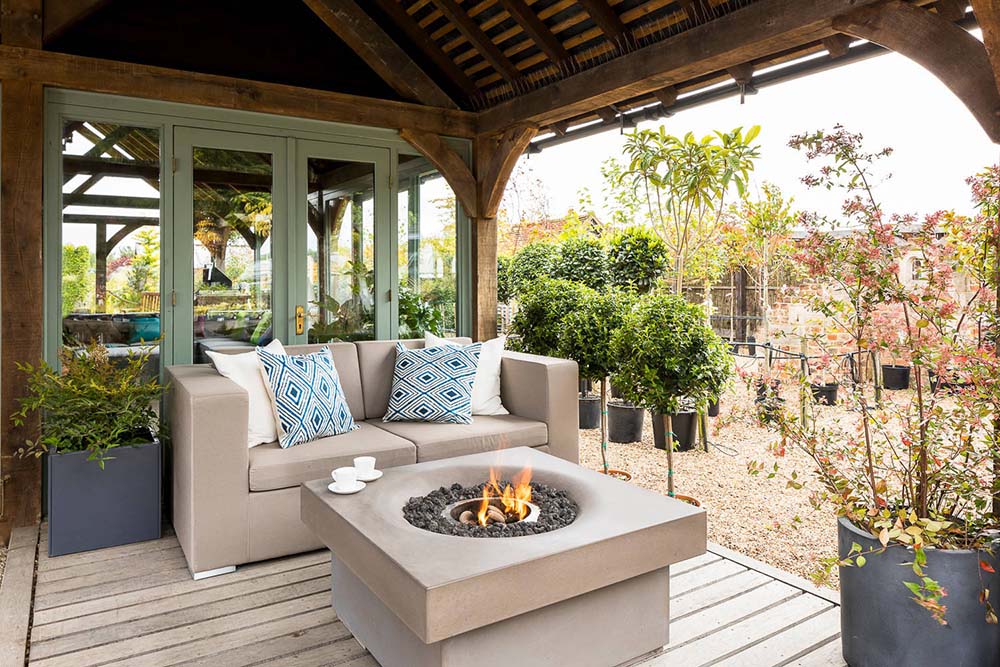
via Solus Decor UK
What decorations are used for a firepit?
Decorations can add a wonderful touch and complete the look of a firepit. Stones are common, and ornaments, statues, and other knick-knacks are chosen for each firepit. However, it would be best if you made decorative choices with caution because many items can present a potential risk of catching fire.
Non-combustible decorations such as metallic artwork, pebbles, and colored glass are good choices. Consider accentuating the firepit with masonry stone or other paving materials to create a natural border around your outdoor fireplace. Garden lighting can create a beautiful evening glow and set the mood for warmth and relaxation.
To enhance the appeal of the firepit, try adding small plants, such as heathers, that contrast nicely with your paving stones. Remember to leave space to store wood – it helps create an orderly ambiance when not in use and prevents wood piles from blocking the view while enjoying it.
Does A Fire Pit Add Value?
A firepit can be a great addition to any outdoor living space. A firepit will be handy during those late-night gatherings and an enjoyable way to spend chilly evenings. It will provide you with beautiful flames that dance in the night sky and cheerful conversations around it.
Not only that but adding a firepit can bring significant value to your home as it will add aesthetic appeal to your garden or patio, making it more attractive for potential buyers should you decide to sell in the future.
Firepits are also available in many sizes, shapes, finishes, and materials, so they can easily fit any style or aesthetic. Ultimately, a firepit is an attractive way to increase value and add character to your outdoor living area.

